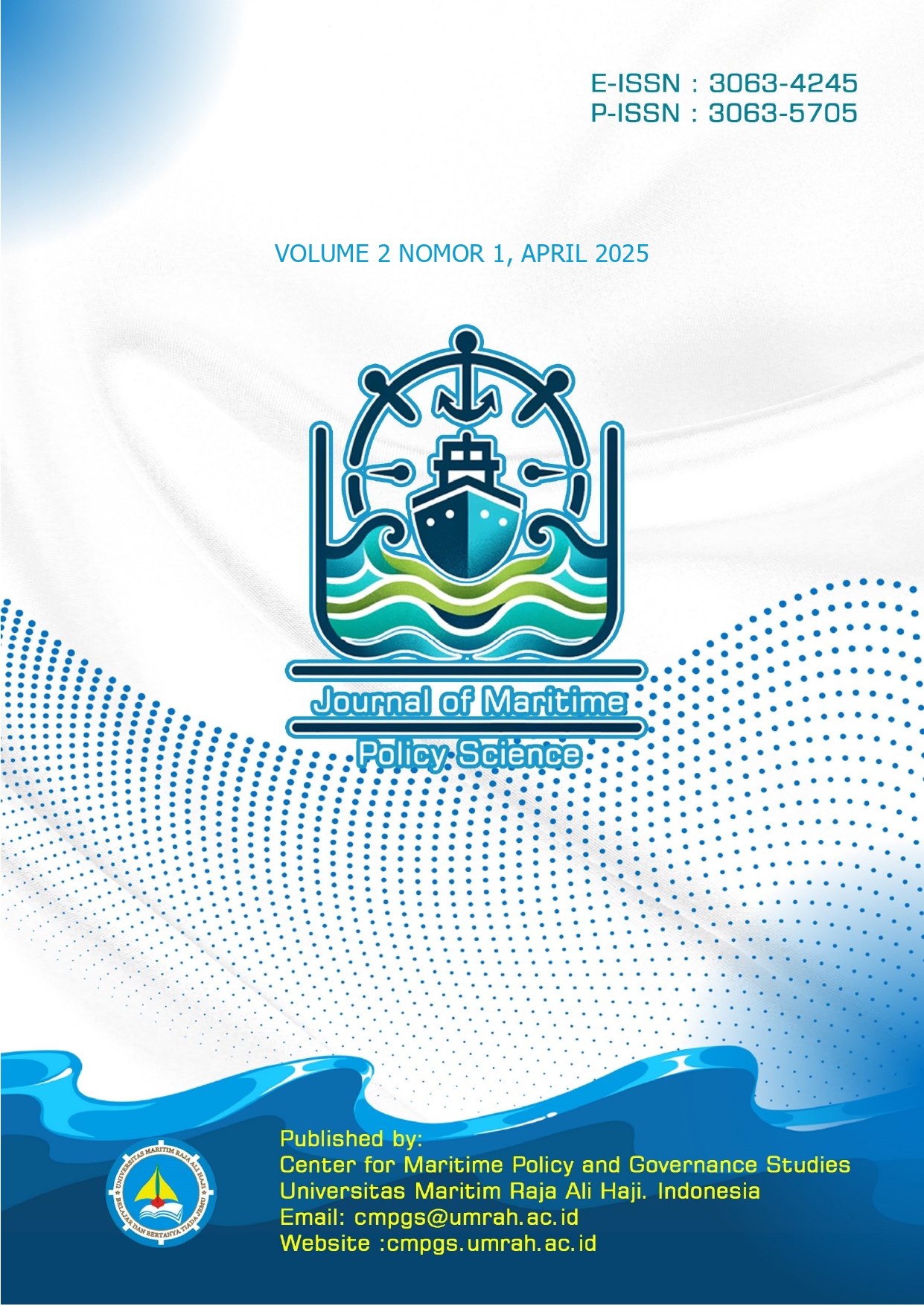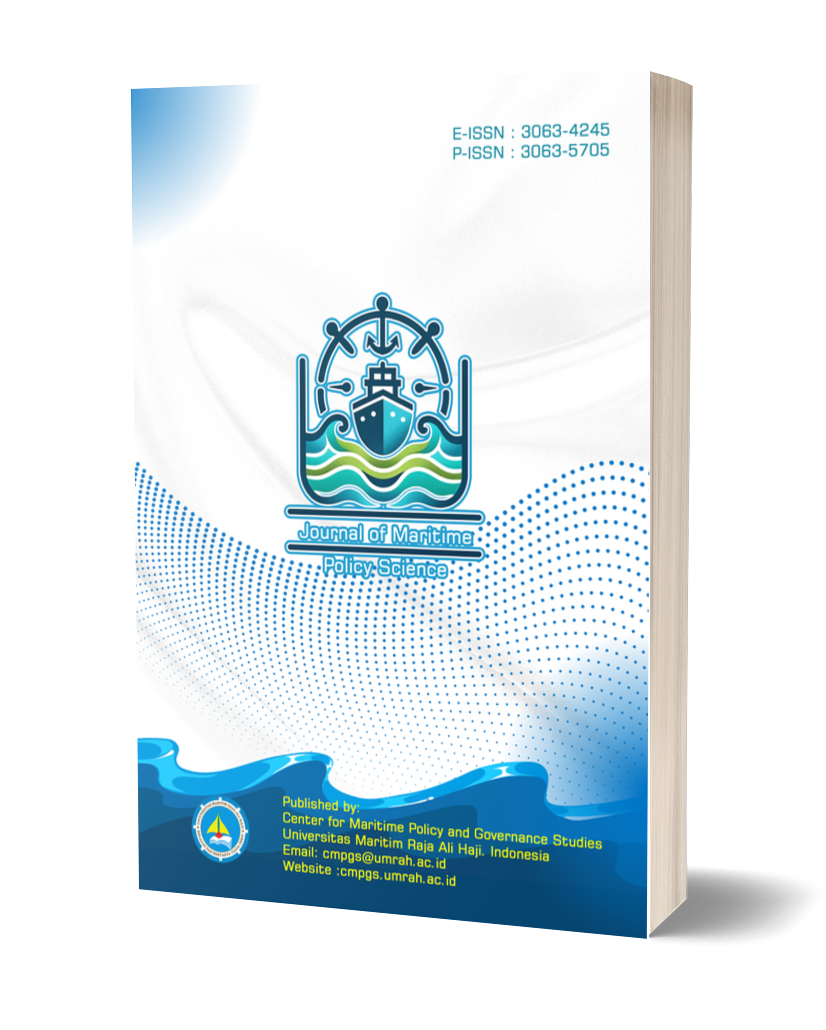Government Paradiplomacy in Proposing Penyengat Island to UNESCO as a World Cultural Heritage
DOI:
https://doi.org/10.31629/jmps.v2i1.7376Keywords:
Paradiplomacy, World Cultural, Local Government, Malay HeritageAbstract
The cultural wealth of Indonesia, particularly from border regions such as the Kepulauan Riau, is increasingly threatened by external claims and lack of international recognition. One prominent case involves Penyengat Island, a significant historical and cultural site in Tanjungpinang, rich in Malay heritage and once a center of the Riau-Lingga Sultanate. Recognizing the island’s cultural and historical value, the Government of Kepulauan Riau Province has initiated efforts to nominate Penyengat Island as a UNESCO World Cultural Heritage Site. This study aims to examine the paradiplomatic strategies employed by the local government in this international cultural diplomacy effort. Using a qualitative descriptive approach, the research collects data through interviews with key officials from the Tanjungpinang Department of Culture and Tourism, field observations, and document analysis. The findings reveal that the local government has undertaken significant initiatives, including the revitalization of historical sites, the preparation of comprehensive documentation and cultural dossiers, and the lobbying of national institutions to support the nomination. The concept of paradiplomacy where sub-national governments engage in international relations proves central to these efforts. While challenges such as limited administrative authority and bureaucratic hurdles persist, the strategic collaboration with the central government and UNESCO-aligned bodies demonstrates the growing agency of local governments in global cultural advocacy. The study concludes that effective paradiplomacy can serve as a critical tool for promoting local heritage on the world stage, emphasizing the need for sustained intergovernmental cooperation and cultural diplomacy frameworks.
Downloads
References
Aguirre, I. (1999). Making sense of paradiplomacy? An intertextual enquiry about a concept in search of a definition. Regional and Federal Studies, 9(1), 185–209. https://doi.org/10.1080/13597569908421078
Bertacchini, E., Revelli, F., & Zotti, R. (2024). The economic impact of UNESCO World Heritage: Evidence from Italy. Regional Science and Urban Economics, 105, 103996. https://doi.org/10.1016/j.regsciurbeco.2024.103996
Canet, C., Sánchez-Aguirre, D., García-Sánchez, L., & Castañeda-Bastida, E. (2024). Geological heritage in UNESCO’s World Heritage List: A critical review. International Journal of Geoheritage and Parks, 12(4), 531–543. https://doi.org/10.1016/j.ijgeop.2024.09.001
Coast, J., & Jackson, L. (2017). Understanding primary data qualitative. In Qualitative Methods for Health Economics. Bloomsbury Publishing.
Cornago, N. (1999). Diplomacy and paradiplomacy in the redefinition of international security: Dimensions of conflict and co-operation. Regional and Federal Studies, 9(1), 40–57. https://doi.org/10.1080/13597569908421070
Creswell, J. W., & Creswell, J. D. (2018). Research design. Qualitative, quantitative, and mixed methods approaches (5th ed.). SAGE Publications.
Fathun, L. M. (2021). Paradiplomacy in Creating Regional Competitiveness: Case Study of Jember Regency. Indonesian Perspective, 6(2), 166–186. https://doi.org/10.14710/IP.V6I2.43542
Fitri, I., Ahmad, Y., & Ahmad, F. (2015). Conservation of Tangible Cultural Heritage in Indonesia: A Review Current National Criteria for Assessing Heritage Value. Procedia - Social and Behavioral Sciences, 184, 71–78. https://doi.org/10.1016/J.SBSPRO.2015.05.055
Ikaputra, I., & Widyastuti, D. T. (2025). Marginalized Modern Architectural Heritage in Indonesia: The case of transformator huisje (gardu listrik) architecture of the Nederlandsche Indisch era. Frontiers of Architectural Research, 14(3), 596–613. https://doi.org/10.1016/J.FOAR.2024.10.005
Jackson, T. (2018). Paradiplomacy and political geography: The geopolitics of substate regional diplomacy. Geography Compass, 12(2), e12357. https://doi.org/10.1111/gec3.12357
Koufodontis, N. I., & Gaki, E. (2022). UNESCO urban world heritage sites: Tourists’ awareness in the era of social media. Cities, 127, 103744. https://doi.org/10.1016/j.cities.2022.103744
Lepinay, C., Mihajlovski, A., Seyer, D., Touron, S., Bousta, F., & Di Martino, P. (2017). Biofilm communities survey at the areas of salt crystallization on the walls of a decorated shelter listed at UNESCO World cultural Heritage. International Biodeterioration & Biodegradation, 122, 116–127. https://doi.org/10.1016/j.ibiod.2017.05.007
Liu, M., Wang, S., Zhou, H., Liu, H., Huang, D., Liu, L., Li, Q., Chen, H., Lei, Y., Jin, L. N., & Zhang, W. (2025). Thermal environment driving specific microbial species to form the visible biofilms on the UNESCO World Heritage Dazu Rock Carvings. Environmental Research, 276, 121510. https://doi.org/10.1016/j.envres.2025.121510
Liu, T., & Song, Y. (2020). Chinese Paradiplomacy: A Theoretical Review. SAGE Open, 10(1). https://doi.org/10.1177/2158244019899048
Malik, Y. I. (2023). Unveiling the Implementation of Bandung-Cuenca Sister City Relationship on Indonesian Cultural Diplomacy. Journal of Paradiplomacy and City Networks, 2(2), 99–112. https://doi.org/10.18196/jpcn.v2i2.36
Melis, C., Wise, N., & Badurina, J. Đ. (2022). Geo-political complexities of governmentality and Balkanism: Deconstructing UNESCO World Intangible Cultural Heritage discourses. Political Geography, 95, 102578. https://doi.org/10.1016/j.polgeo.2021.102578
Paquin, S. (2020). Paradiplomacy. In Global Diplomacy (pp. 49–61). Palgrave Macmillan, Cham. https://doi.org/10.1007/978-3-030-28786-3_4
Suhaila, R., & Baijuri, R. H. T. (2024). Implementation of religious and cultural tourism development policies in Penyengat island. Indonesian Tourism Journal, 1(2), 93–101. https://doi.org/10.69812/itj.v1i2.28
Sutianto, S. A., Sidabutar, Y. F., & Sinaga, M. I. P. (2023). Development of Historical and Religious Tourism in Spatial Planning Towards the Utilization of Local Wisdom Potentials in Penyengat Island. JMKSP (Jurnal Manajemen, Kepemimpinan, Dan Supervisi Pendidikan), 8(2), 717–733. https://doi.org/10.31851/jmksp.v8i2.11234
Swastiwi, A. W. (2022). Penyengat Island Riau Island: Towards A World Heritage. International Journal of Environmental, Sustainability, and Social Science, 3(1), 116–129. https://doi.org/10.38142/ijesss.v3i1.169
Syuryansyah, S. (2024). Assessing the Paradiplomacy of Regional Governments in Indonesia: The Case of Banten Province. Papua Journal of Diplomacy and International Relations, 4(1), 67–84. https://doi.org/10.31957/pjdir.v4i1.3218
Zamorano, M. M., & Rodríguez Morató, A. (2015). The cultural paradiplomacy of Barcelona since the 1980s: understanding transformations in local cultural paradiplomacy. International Journal of Cultural Policy, 21(5), 554–576. https://doi.org/10.1080/10286632.2014.943752
Downloads
Published
Issue
Section
License
Copyright (c) 2025 Vira Anggelina Putri, Ady Muzwardi, Rizqi Apriani Putri (Author)

This work is licensed under a Creative Commons Attribution-ShareAlike 4.0 International License.
You are free to:
- Share — copy and redistribute the material in any medium or format for any purpose, even commercially.
- Adapt — remix, transform, and build upon the material for any purpose, even commercially.
- The licensor cannot revoke these freedoms as long as you follow the license terms.
Under the following terms:
- Attribution — You must give appropriate credit, provide a link to the license, and indicate if changes were made . You may do so in any reasonable manner, but not in any way that suggests the licensor endorses you or your use.
- ShareAlike — If you remix, transform, or build upon the material, you must distribute your contributions under the same license as the original.
- No additional restrictions — You may not apply legal terms or technological measures that legally restrict others from doing anything the license permits.













